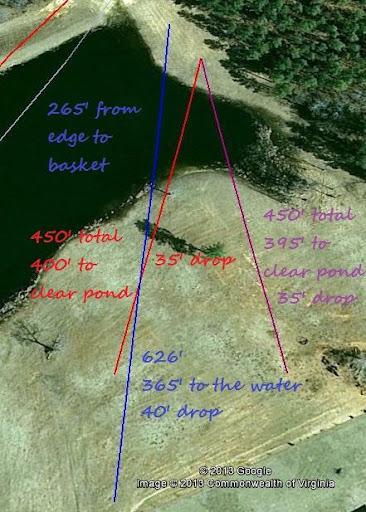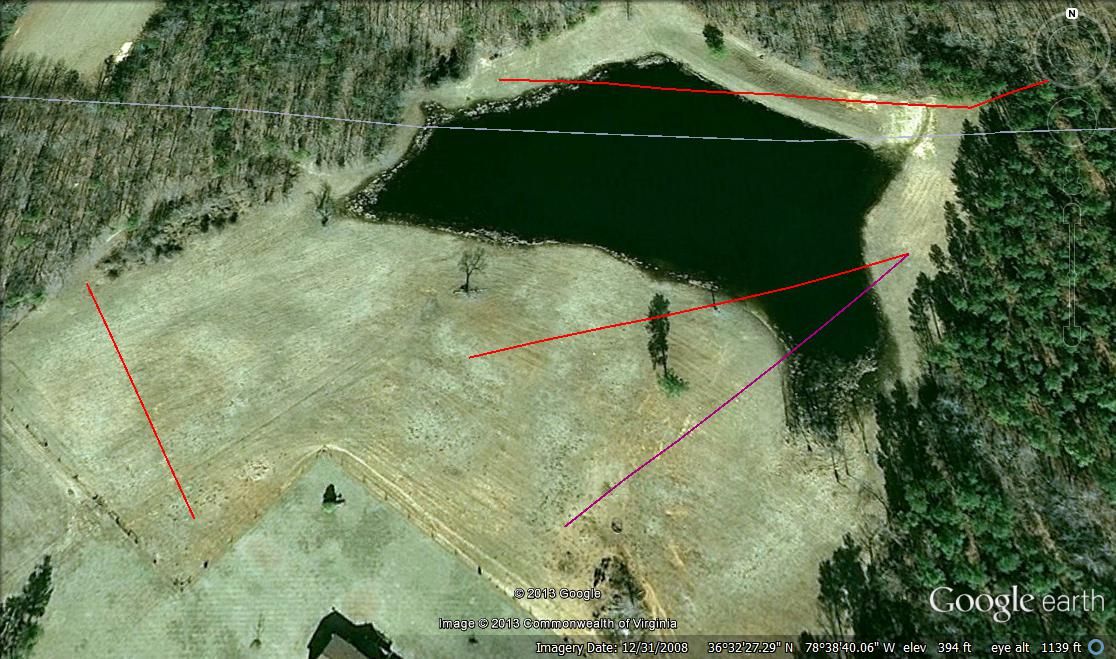Thanks for the feedback, I have no intention of making this a permanent hole. As I said, it's a National Park so that is not much of an option, but it's been a great way to experiment with different design ideas and then test them out on myself and my buddies.
Got it.
I know I marked it as Gold and in other cases Blue, but it's really more of a blue/gold or high blue, low gold... basically I'm trying to make the best holes for my friends and myself who rate in the 940's - 990's.
Then that's great.
I was confused with something in your message, which shot is to short, the 300 ft layup short of the OB or 300 ft shot to clear the OB.
I was saying that a 300' layup drive is a bit short if it were strictly gold, but there's no real issue.
Thanks for the feedback about the eagle landing zone. Would you suggest making it angled or just totally straight? Example top left corner of fairway clearing OB is 490 ft away from tee, bottom right is 440 ft away from tee.
Just going "by the book," you could make it so that the more OB you carry, the closer to the pin you are. So if you cut it in half, from 8:00 to 2:00 and include the eagle landing area you already have, you could get the best of both worlds.
Also, I know where you're coming from on the whole artificial OB thing in permanent courses, but I was surprised that you don't even like them for tournaments outside of the USDGC. It makes me curious, what's your opinion of some of the European courses? I think a lot of people watch videos of the courses in Europe and find them to be really interesting and exciting... but it sounds like you may have a different opinion? Please share your thoughts.
Thanks!
In thinking about it, I guess I have two concerns. I love water OB if it's available and used judiciously. Artificial OB ponds have two major psychological downsides for me. The big one is aesthetics. The other one is having to pick up your disc and remark your lie. I just prefer to avoid that as much as possible. The other consideration is that I'd rather give people a chance to work their way out of trouble, as opposed to picking up and taking a stroke. Those are all factors that add up to make the game more enjoyable. Of, course, those are standards that make course design much harder. In your case, if you're just doing it for your friends, none of it is a big deal.
I've seen a couple SDGO videos, and I remember some holes where there's OB along the edges of fairways and one hole with an island green. Neither bother me as much as making OB ponds. As for other European courses, I don't know that I've seen any of the videos you mention. I haven't been able to find much time for watching videos, but I can sneak in a few minutes here and there. Maybe you could recommend some.





